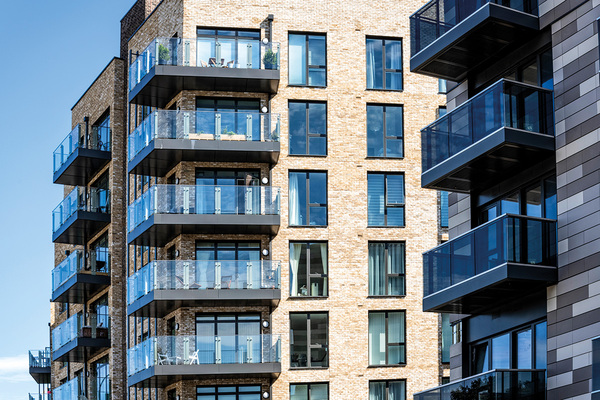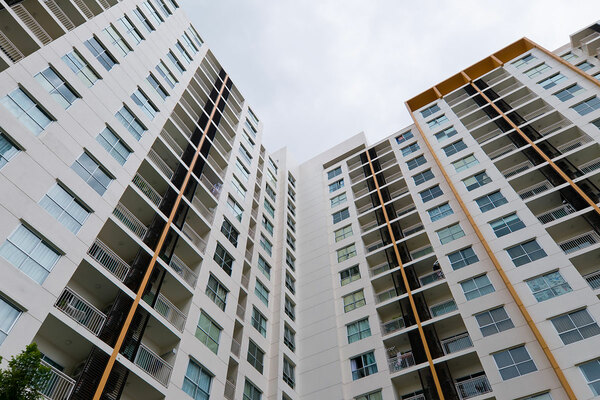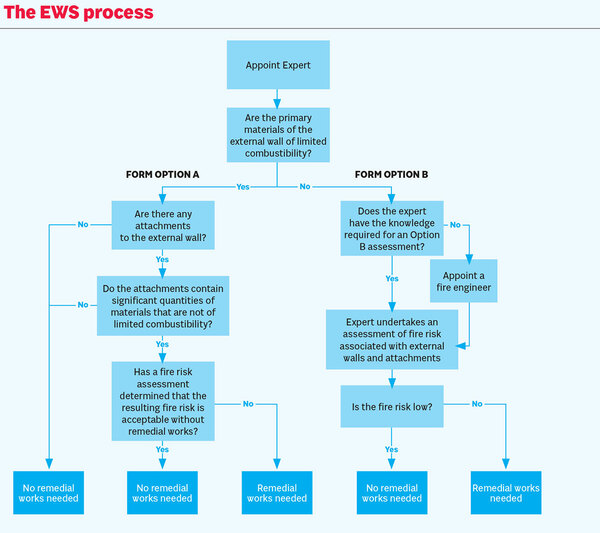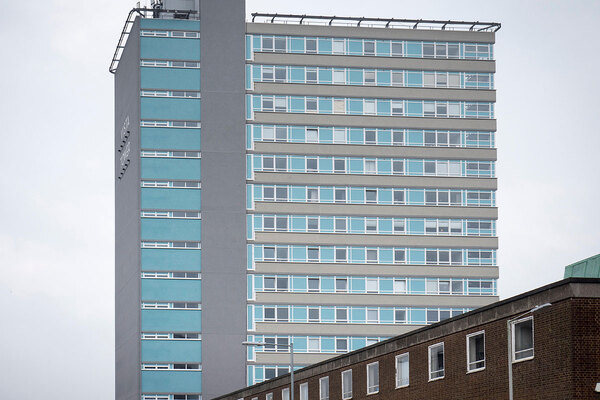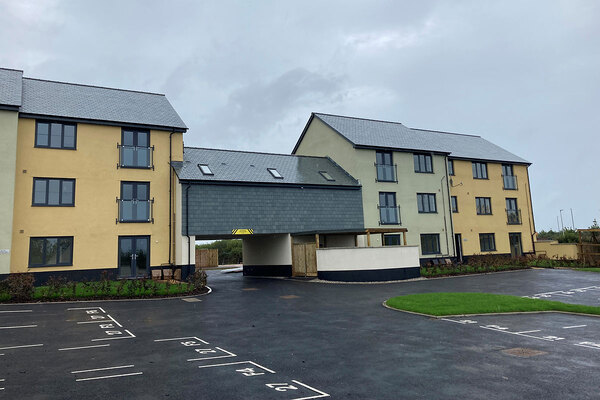Flat sale ‘slowdown’ as government guidance causes mortgage refusals on buildings under 18m
Sales of apartments across the country have ground to a halt across the country as government fire safety guidance has seen banks refuse mortgages on buildings of all heights, Inside Housing can reveal.
Dozens of leaseholders and shared owners have told Inside Housing that they are currently “trapped” and not able to sell their homes due to banks requiring independent cladding checks on buildings before mortgages can be issued.
In the past 18 months, thousands of leaseholders living in blocks over 18m have been made ‘mortgage prisoners’ as the aftermath of the Grenfell Tower tragedy has seen banks more reluctant to lend on properties with potentially dangerous cladding or balconies.
However, for the first time, Inside Housing can reveal that this is now impacting a large amount of homes in buildings under 18m, too.
Inside Housing has identified blocks as small as 9m where residents have had to put their lives on hold as sales have fallen through.
Many of the affected leaseholders and shared owners live in housing association developments; landlords have said it could take years for checks as they work through thousands of buildings.
The problem is compounded by a national shortage of professionals to carry out these checks, also known as the External Wall System 1 (EWS) process. The process was created last December by the Royal Institution of Chartered Surveyors (RICS) in collaboration with the financial sector.
It was set up to overcome the issue that saw hundreds of leaseholders in buildings over 18m unable to sell their homes due to the government’s Advice Note 14, which advised building owners to remove dangerous cladding systems.
The EWS process was originally set up to cover only buildings over 18m and provide a route for inspectors to make a decision on whether cladding systems were safe.
In January, the government published updated building safety guidance which called for dangerous cladding on all buildings, regardless of height, to be removed.
This change brought tens of thousands more buildings into scope, with banks unwilling to give mortgages on buildings under 18m without an EWS check.
Inside Housing has been contacted by a number of housing association leaseholders who have seen sales fall through.
One A2Dominion leaseholder described how her family is now facing “financial ruin” after being unable to sell her apartment in an 8.6m block in Hammersmith since last year. She moved out when a buyer was found and is currently paying rent on another property outside of London.
A2Dominion told Inside Housing that it is focusing on buildings above 18m as this was where risks were greatest, but is supporting residents currently stuck by allowing them to sub-let their homes.
One Clarion leaseholder told Inside Housing that they had been waiting five months for an EWS check to be carried out. Clarion confirmed that the block would be getting an assessment in the next three or four weeks.
It also added they were seeing an increased number of requests for an EWS assessment for buildings and that the limited number of qualified professionals able to carry out the checks has created a bottleneck.
Inside Housing has also heard stories of banks requiring an EWS form for buildings bought off plan and homeowners unable to remortgage, losing thousands of pounds by being placed on extortionate variable interest mortgages.
In correspondence between one leaseholder and RICS, seen by Inside Housing, the body said the issue of unsellable homes has been compounded by the government’s guidance, which is having the effect of “slowing down the market”.
It says that the inevitable effect is lenders taking a more cautious approach and requesting an EWS form for buildings under 18m, which is having the effect of “slowing down the market”.
It added that the action by banks is a “natural reaction to the uncertainty the government guidance has created” and that “only the government can solve” the issue.
RICS did stress to Inside Housing that it is working with the government collaboratively for urgent intervention, and that EWS forms were being used successfully in many cases and is allowing lending to continue.
Inside Housing has uncovered instances involving nearly all of the country’s major banks and building societies refusing to lend on properties until an EWS check has been carried out. These include banks such as NatWest, Barclays, HSBC and Halifax. Building societies such as Nationwide, Skipton and Coventry also require an EWS form.
Helen Evans, chair of the G15 and chief executive of Network Homes, said the G15 was pleased to work with RICS on the establishment of the EWS form for buildings over 18m.
She added: “There are a limited number of qualified engineers to carry out inspections and we are prioritising those buildings which we know are higher risk, as identified by the government. This is already a lengthy and complex process that would become unmanageable if it was extended to all buildings below 18m.”
The majority of housing associations are prioritising the checks of highest risk buildings first, meaning that in many cases the smallest buildings will be last on the list for an assessment. Some major housing associations own hundreds of blocks and have said it could take years for all checks to be carried out.
A spokesperson for the government said: “It is unacceptable that some residents of high-rise buildings find themselves stuck in limbo, unable to sell their home.
“We are working with lenders and leaseholders by providing access to the information they need so that sales and remortgaging can take place.”
Banks’ responses
A spokesperson for Nationwide said: “Generally, the concern relates to how a building has been built rather than the size of it. And it also depends on what fire and safety concerns have been identified by the surveyor.
“When it comes to mortgage applications, Nationwide would require sight of documentation from a suitably qualified person that confirms a building is safe and secure. This is purely to ensure the mortgage application does not progress until the necessary documentation has been received and we can ensure that the property is safe for that person/those people to reside in.”
